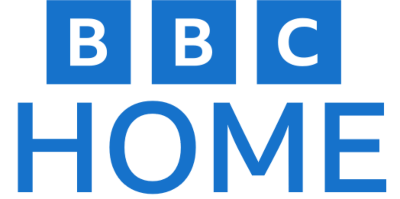Peacock, NBCUniversal’s streaming service, launched in July 2020 with a unique strategy in the highly competitive streaming market: a free, ad-supported tier. Unlike competitors such as Netflix, Disney+, and HBO Max, which relied primarily on subscription-based models, Peacock entered the market with a tiered pricing structure that included a free option. This approach was designed to attract a broad audience, differentiate itself from competitors, and leverage NBCUniversal’s extensive content library and advertising expertise.
This article explores the key reasons behind Peacock’s decision to offer a free tier initially, analyzing factors such as market competition, consumer behavior, advertising revenue potential, content strategy, and corporate synergies.
You May Also Like- Peacock : Start Streaming Today with This Simple Login Guide Visit : Peacocktv.com tv/samsung
1. Competitive Differentiation in a Crowded Streaming Market
The Rise of Streaming Wars
By 2020, the streaming landscape was dominated by major players like Netflix, Amazon Prime Video, Disney+, and HBO Max. These services primarily relied on subscription fees, with limited ad-supported options. Peacock’s free tier was a strategic differentiator, allowing it to stand out in an increasingly saturated market.
Targeting Price-Sensitive Consumers
Many consumers were reluctant to add yet another paid subscription to their monthly expenses. Peacock’s free tier provided an entry point for users who were unwilling or unable to pay for multiple streaming services. This strategy helped Peacock quickly build a user base without requiring an upfront financial commitment.
Leveraging NBCUniversal’s Strengths
Unlike pure-play streaming startups, Peacock had the backing of NBCUniversal, a media giant with decades of experience in broadcast television and advertising. The free tier allowed Peacock to replicate the traditional TV model—free content supported by ads—while transitioning viewers to digital streaming.
2. Advertising Revenue as a Key Business Model
The Shift to Ad-Supported Streaming
While Netflix and Disney+ initially avoided ads, other services (like Hulu) had proven that ad-supported streaming could be lucrative. Peacock’s free tier was designed to capitalize on this trend, offering advertisers a digital platform with precise targeting capabilities.
Higher Monetization Potential
Peacock’s ad-supported model allowed it to generate revenue from both subscription fees (for premium tiers) and advertising (for free and lower-cost tiers). This dual-revenue approach reduced reliance solely on subscriber growth, making the business model more sustainable.
Leveraging NBCU’s Ad Sales Infrastructure
NBCUniversal already had a robust advertising division through its TV networks (NBC, Bravo, USA Network, etc.). Peacock’s free tier allowed the company to extend its ad sales expertise into streaming, offering bundled ad deals across linear TV and digital platforms.
3. Content Strategy: Maximizing Reach and Engagement
Library Content vs. Originals
Unlike Netflix and Disney+, which heavily invested in original content, Peacock initially relied on NBCUniversal’s vast library of TV shows, movies, and sports. The free tier allowed Peacock to monetize older content that was no longer generating significant revenue elsewhere.
You May Also Like- Peacock : Start Streaming Today with This Simple Login Guide Visit : Peacocktv.com/tv
Tiered Content Access
Peacock’s free tier offered a limited selection of content, while premium tiers provided full access, including originals and live sports. This “freemium” model encouraged users to upgrade for more exclusive offerings.
Live Sports and News as a Hook
Peacock included live sports (Premier League, WWE) and news (NBC News, MSNBC) in its free and premium tiers, attracting cord-cutters who still wanted access to live events without a cable subscription.
4. Corporate Synergies and Ecosystem Benefits
Supporting NBCUniversal’s Broader Strategy
Peacock was not just a standalone streaming service but part of NBCUniversal’s broader digital transformation. The free tier helped retain viewers who might otherwise migrate to competitors, ensuring NBCU maintained influence in the streaming era.
Cross-Promotion with Comcast
As part of Comcast, Peacock benefited from bundling opportunities. Comcast Xfinity customers received free or discounted Peacock Premium, driving adoption while reducing churn for Comcast’s cable business.
Data and Viewer Insights
The free tier allowed Peacock to collect valuable user data, which could be used to improve content recommendations, ad targeting, and even inform programming decisions across NBCU’s networks.
5. Challenges and Long-Term Adjustments
Initial Growth vs. Monetization Struggles
While the free tier helped Peacock amass over 30 million sign-ups within its first year, converting free users to paid subscribers proved challenging. Over time, Peacock reduced the amount of free content, pushing more users toward paid plans.
Competition from Other Free Services
Tubi, Pluto TV, and The Roku Channel also offered free, ad-supported streaming, increasing competition in the AVOD (ad-supported video-on-demand) space. Peacock had to balance its free offerings with premium exclusives to remain competitive.
Shift Toward Profitability
By 2023, Peacock began prioritizing profitability over user growth, reducing its reliance on the free tier. However, the initial free offering had served its purpose—establishing Peacock as a recognizable brand in streaming.
You May Also Like- Usa Network : Start Streaming Today with This Simple Login Guide Visit : Usanetwork.com/activatenbcu
Conclusion
Peacock’s decision to launch with a free tier was a calculated move to differentiate itself in the streaming wars, leverage NBCUniversal’s advertising expertise, and attract a broad audience. While the free tier helped Peacock gain initial traction, the service gradually shifted toward a more subscription-driven model as it sought long-term profitability.
The strategy reflected broader trends in streaming, where ad-supported options are becoming increasingly important. Peacock’s early bet on a free tier demonstrated the value of flexible pricing models in an evolving media landscape. Whether this approach remains central to Peacock’s future or evolves further will depend on changing consumer preferences and competitive dynamics in the streaming industry.







